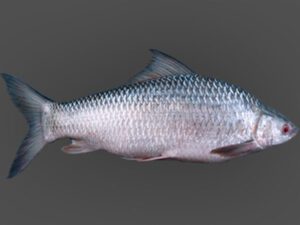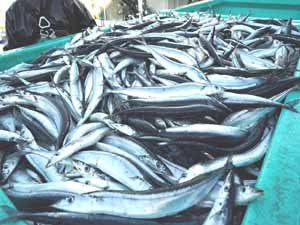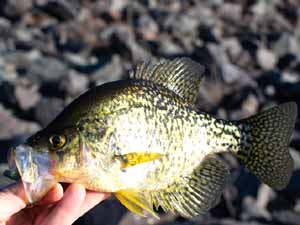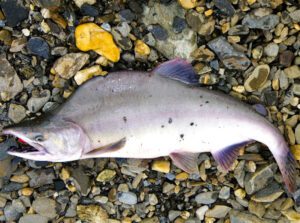The Rainbow trout fish is a trout and species of salmonid, and it is native to cold-water tributaries of the Pacific Ocean in Asia and North America.
It is also called by some other names such as Bow, Redsides, Redband, Silver Trout etc.
These fish have also been introduced into streams and lakes all over the world, mainly because of their popularity as game fish and great taste.
The Rainbow trout fish was named from the beautiful colors that shine on their skin. Today it is available in many countries throughout the world.
And it is raised mainly for food and it is also used for sport fishing. There are many subspecies of this fish. Read some more information about the Rainbow trout fish below.
Rainbow Trout Fish Characteristics
The Rainbow trout fish are very beautiful and colorful creatures. Their coloration varies widely in relation to gender, habitat, age and spawning condition.
Colors on the back of these fish can range from brown, to olive, to dark blue. And almost all fish have a pinkish band running the length of their body, and a silver underside that fades to pearl white. And there are also some small black spots on their back, fins and tail.
Rainbow trout fish have small scales over their body. They have fleshy adipose fin on the back behind the dorsal fin. Their fins lack spines.
There is a small triangular projection at the base of the pelvic fin. The tail fin of this fish is definitely forked, and the anal fin usually has 10 or 11 rays.
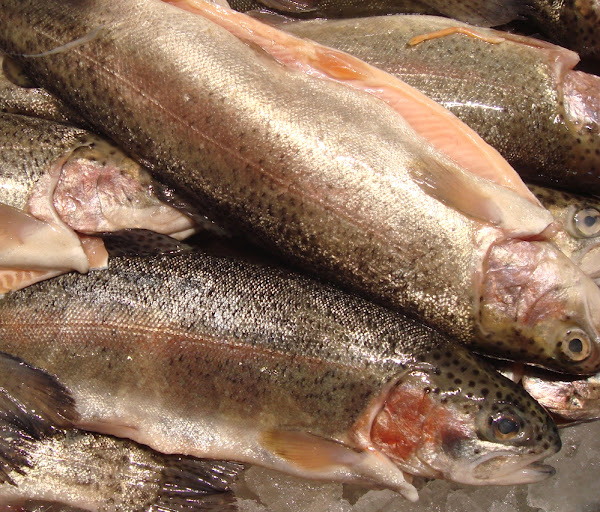
Average body length of these fish is between 20 and 30 inches. But they can grow as long as 4 feet.
Generally mature freshwater stream Rainbow trout fish weight between 0.5 and 2.3 kg. But the lake-dwelling and anadromous forms may reach around 9 kg. Photo and info from Wikipedia.
Feeding
The Rainbow trout fish eat a variety of animal life, but aquatic insects, terrestrial insects, snails and small fishes often make up the bulk of their diet.
Usually they will eat nearly anything they can capture. They are generally surface feeders, but the fish which are living in large lakes and oceans are bottom feeders and eat mollusks, crustaceans worms, other fish, squid and amphipods.
Breeding
Wild Rainbow trout fish generally spawn in late December through early February. And the hatchery brood stock spawn in October and November.
In nature, the female fish dig a shallow pit on clean, gravelly riffles, fanning it hard with her tail. Then the female lay eggs, and one or more males fertilize the eggs.
The female resumes digging upstream, covering the eggs by gravel carried by the current. Generally no parenting care is provided. As compared to the the wild, the hatchery-raised fish can grow faster.
The hatchery-raised fish generally reach around 10 inches length within their first year. Rainbow trout fish generally spawn when water temperature reach at least 6 to 7 °C.
They generally begin spawning at the age of 3 or 4 years. And the female can spawn from 200 to 8000 eggs during the breeding season.
Uses
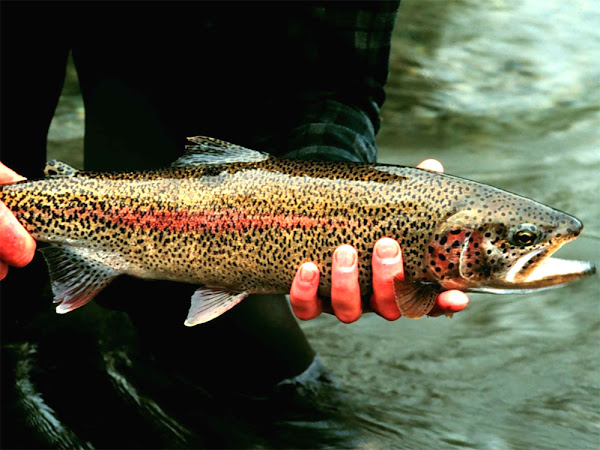
The Rainbow trout fish is mainly used as food. It is very popular in Western cuisine and both wild and farmed fish are popular. It is also highly regarded as a game fish.
Special Notes
The Rainbow trout fish generally prefer cool, clear rivers, streams and lakes. Some fish will leave their freshwater homes and follow a river out to the sea.
Today it is a very popular fish and used mainly for food. It’s meat can range in color from white to dark red.
The Rainbow trout fish are being commercially farmed in many countries throughout the world.
The practice for farming this fish began in the late nineteenth century, and the commercial production has grown dramatically since the 1950s. Largest producer of these fish is Chile.
Inland production of rainbow trout to supply domestic markets has increased in countries such as Italy, France, Germany, Denmark and Spain.
Average lifespan of the Rainbow trout fish is between 4 and 6 years in the wild, with a maximum recorded lifespan is 11 years. However, review full breed profile of the Rainbow trout fish in the following chart.
| Name | Rainbow Trout |
| Kingdom | Animalia |
| Phylum | Chordata |
| Class | Actinopterygii |
| Order | Salmoniformes |
| Family | Salmonidae |
| Genus | Oncorhynchus |
| Species | O. mykiss |
| Binomial Name | Oncorhynchus mykiss |
| Other Names | Also known as Bow, Redsides, Redband and Silver Trout |
| Breed Purpose | Mainly food, also sport fishing |
| Special Notes | Prefer cool, clear water, today very popular and mainly used for food, meat can range in color from white to dark red, commercially farmed in many countries throughout the world, largest producer country is Chile, average lifespan of this fish is between 4 and 6 years in the wild |
| Breeding Method | Natural and artificial |
| Weight | Generally harvested when they reach 0.5-2.3 kg in commercial farms, but can reach up to 9 kg |
| Water Type | Freshwater |
| Climate Tolerance | Native climate |
| Body Color | Coloration varies widely between regions and subspecies |
| Rarity | Common |
| Availability | Worldwide |

